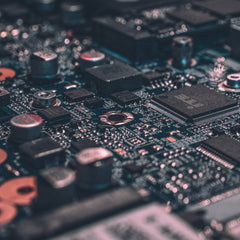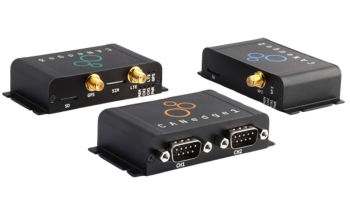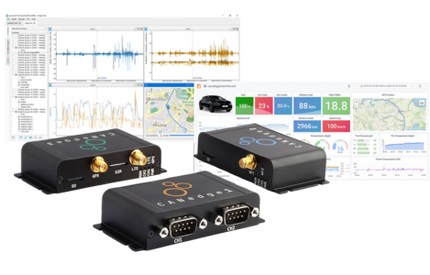As the old adage says, if it ain’t broke, don't fix it. This has held true for control engineers in the last 44 (and counting) years regarding industrial connectivity. When the first PLCs (Programmable Logic Controllers) were introduced to the factory floor, they worked well but could not communicate with each other. In response to this, Modbus was created. Since then, newer and faster protocols have been introduced and favored on the factory floor. Modbus might no longer be the top dog in industrial connectivity, but there is still a place for it in factory automation. This article will explain why you should think twice about phasing out your Modbus-dependent legacy devices and how Grid Connect can help you stay connected.
Modbus RTU
The old school way to connect Modbus devices is through Remote Terminal Units. Modbus RTU utilizes a client/server technique to facilitate communication between devices. One client can connect with up to 254 server devices. Modbus RTU is a binary protocol. Messages start with the server’s address byte, followed by a function code byte, optional data, a CRC for error detection, and terminated by a short silent interval. The optional data normally consists of the data’s starting address, length and possibly the data values depending on whether it’s a write or a read.
Modbus RTU uses physical serial standards to connect devices. The two most popular ones are RS-232 and RS-485. Despite being over 60 years old, RS-232 is still commonly used to connect smaller devices, such as barcode scanners, LED displays, and scales. RS-485 supports faster speeds, longer runs, and more devices via a daisy-chain topology. It also offers a low-cost wiring solution (2-wire half-duplex or 4-wire full duplex) and supports longer straight-line run lengths than Ethernet.
Modbus TCP
Rather than using a serial standard, Modbus TCP transports packets over TCP/IP networks like Ethernet. This allows for more flexible link access and addressing so that multiple clients can access each server device. In other words, while a Modbus RTU client has a ‘one-to-many’ relationship with its server devices, Modbus TCP offers a ‘many-to-many’ relationship between client and server devices. It allows operational data to be gathered and used by more than one management unit. A few examples of Modbus TCP server devices include transducers, valves, and numerous measurement devices.
The Modbus TCP message encapsulates a Modbus RTU message minus the CRC. The message is given a 6 byte header containing a transaction identifier, protocol identifier and a message length field. The CRC is removed because error detection is taken care of by the TCP/IP layer.
Why is Modbus still ‘alive’ on the factory floor?
To answer the original question posed in the title of this article, yes, Modbus is still alive (and kicking). In fact, Modbus is still considered to be the de facto standard in industrial automation. While it might not be the most popular industrial protocol (in terms of quantity of devices connected), it is still the most widely used network protocol in manufacturing. Most factories use Modbus in some fashion, and they would be foolish to not continue using it. Here are four reasons why.
Easily Understood Data Model
So many engineers love Modbus because of its ease of use. Modbus uses only two data types--registers and coils. Coils are just single data bits, 1s and 0s. These coils merely represent discrete outputs and can be read or written. Contacts, on the other hand, represent discrete input and can only be read.
Registers, on the other hand, are simply 16-bit signed or unsigned data that come in two categories: input and holding registers. Input registers act as digital representations of analog signals. These might include the speed of a conveyor belt, a machine’s temperature, or the voltage of an electrical current. These are read-only registers. Holding registers can be read or written, and are simply used to store data. If a 32-bit integer is necessary, the two registers are read as a pair.
Open Standard
When Modicon (now Schneider Electric) introduced Modbus, they wanted it to change the way industrial devices stay connected. That is why they released it as an open standard so that it could be implemented and improved upon by any developer, which is exactly what happened. Today, there are over 7 million Modbus nodes in North America and Europe alone.
Ease of Implementation
Because Modbus uses a simple message format and client-server relationship, it is easy to implement.The Modbus protocol is a good choice when only a few legacy devices need to be connected. Modbus clients utilize a request-response command structure with their server counterparts. Clients send output data to servers, the servers respond to reads with input data.
Interoperability
The ease of implementation and low cost of entry makes Modbus the protocol of choice for device manufacturers. If an OEM adds Modbus to their device, it opens the door to virtually the whole gamut of other industrial protocols by using protocol gateways. Gateways exist to convert Modbus RTU to virtually every other industrial protocol, including EtherNet/IP, PROFINET, EtherNet/IP and EtherCAT.
Grid Connect Helps Keep You Connected
As a control engineer, your job is to increase production efficiency in your factory. It may be tempting to replace old legacy devices with newer ones that operate using the same protocols as many of your other devices. If you are hesitant to pull the trigger because of the costs associated with this decision, you are in luck.Grid Connect has cost-effective solutions that don't require you to make a hefty investment in new equipment.
NET485 Modbus Adapter
The NET485 Adapter allows you to connect RS-485 (or RS-422) Modbus RTU devices to Modbus TCP devices or networks. This easy to use gateway connects serial Modbus devices to the Ethernet based Modbus TCP networks. Using a single gateway it is possible to connect multiple daisy-chained Modbus RTU servers to a Modbus TCP client.
Unigate Modbus RTU Gateways

The Unigate CLGateway provides a connection for any Modubus RTU device to another type of protocol such as PROFINET. One side of the gateway supports the fieldbus protocol, and the other features a serial port that interfaces directly with your Modbus device.
Need Support?
We hope that you found the information in this article helpful. If you still have additional questions, or want to know how Grid Connect can serve you, feel free to get in touch, we have several options:
- Click the chat icon in the bottom right corner of your screen.
- Give us a call at (630) 245-1445 (Note we are in Central Time Zone)
- Complete contact information, including address and hours of operation.
Thanks for reading!








